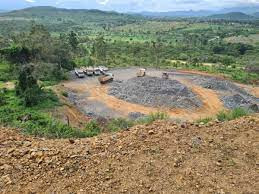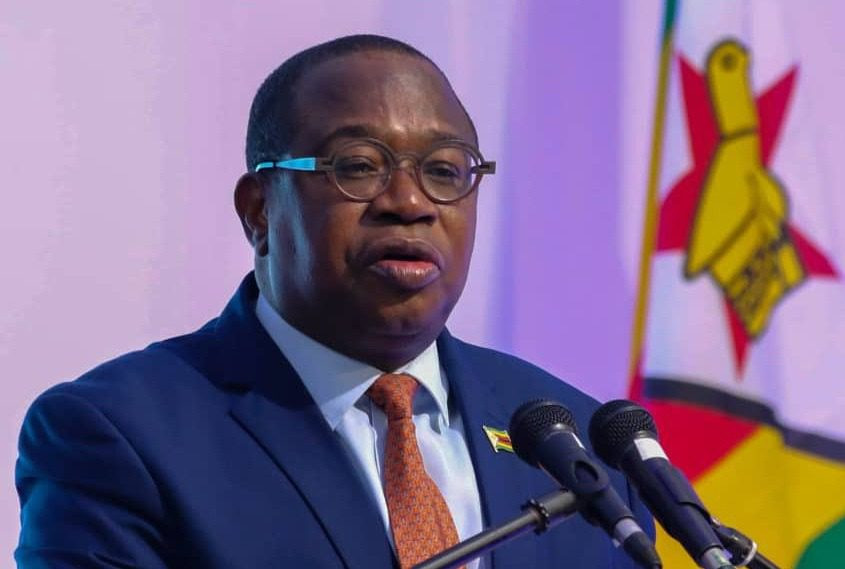
IN OCTOBER 2022, Mberengwa — a remote outback district in Zimbabwe’s Midlands province, was just another impoverished region where villagers struggled to make ends meet.
Perennially saddled with droughts due to low rainfall, Mberengwa is one of Zimbabwe’s poorest districts where some villagers battle grinding food shortages.
Still concerns permeate through the district that while people struggle vast resource endowments lie under the chest of Mberengwa’s rolling mountains and plains, where multinationals have explored and generated fortunes for decades.
Gold, asbestos, iron and emeralds reserves are among minerals that have been discovered in the district over the years, where temperatures can be too brutal for growing crops.
This is why when Chinese explorers announced massive lithium discoveries in the region last year, Mberengwa erupted into a frenzy of joy and hope.
Poverty still haunts the district today, but news of potentially lucrative lithium find has spread far and wide, bringing hope to a community whose youths have so much ambition.
There was an immediate flood of artisanal miners into the lithium fields including at Sandawana Mines.
Officials estimate that the lithium rush attracted more than 5 000 artisanal miners to the mining fields.
- Zimbabwe deals help China tighten African lithium grip
- Zimbabwe deals help China tighten African lithium grip
- Zimbabwe’s huge say in US$60m lithium market
- Pioneering Zim lithium executive steps down
Keep Reading
It was free for all.
At the height of the rush, up to 30 tonnes of lithium ore were being spirited to neighbouring South Africa, where powerful cliques bought it for almost nothing.
The resource at the time fetched between US$800 and US$1000 per tonne in formal South African markets.
But villagers and artisanal miners earned between US$150 and US$200 per tonne in the back markets.
Lithium is currently being exploited in only eight countries globally.
About 85% of global supply originates from Australia, Chile and China, with demand being driven by the recent boom in demand by electric vehicle production factories.
Official statistics say Zimbabwe is the world’s fifth largest producer, with its output rising steadily in the past year, as big firms took over claims explored by resource juniors to establish what they project to be a future world class hub.
Government says Zimbabwe has potential to account for 20% of global output once full exploitation begins.
Authorities moved in quickly to bring sanity to Sandawana.
Kuvimba Mining House (KMH), 65% controlled by the government, are the right owners of the resource at Sandawana.
It also moved to bring order, with backing from Mines and Mining Development deputy minister Polite Kambamura, who travelled to the region last year.
But the action became a source of conflict between KMH, the police, villagers and other miners.
Sandawana lithium claims are found in Gwamakudo, Westgate and Varichem.
However, as KMH moved in, many were worried that this could be another curse for the community, where Zimbabwe’s top brass creams off everything at the expense of locals.
However, during a tour of Sandawana last week, officials said they had covered significant ground.
On paper, the firm appears to be on the right path.
Following fresh exploration, the Sandawana resource is now estimated at US$3 billion, up from US$5 million previously.
Addressing journalists during the tour, Sandawana general manager Godwin Gambiza said: “Sandawana’s valuation is now between US$2,5 billion and US$3 billion.”
Three companies are currently on a ‘fast-tracked’ exploration programme, with 33 drilling rigs on site.
The exploration programme is expected to establish a lithium resource of more than 200 million tonnes at an average grade greater than 1,5%, according to Gambiza.
This will make it the largest known resource in the region, he added.
Sandawana is targeting to find a resource of up to 30 million tonnes.
“We are the first lithium operation in Zimbabwe to have our resource in the measured category,” he said.
“I think we are talking of around 18 million tonnes of lithium ore that you can confirm as in measured category, around 2,3 million in indicated, and the balance up to 30 million,” Gambiza said.
“As we go to phase three and phase four, we expect our resource to go up to 200 million tonnes of lithium ore. That will position Sandawana as the biggest lithium mine in Zimbabwe, leading the rest.
“Of those (companies) that have released their exploration data, the leading one is sitting on a deposit of 72 million at an average grade of 1,06% lithium oxide. In our case, we would be around 200 million at an average grade of 1,4% lithium oxide, which means again in terms of grades we are leading,” he said.
Sandawana has already started open-cast mining.
Gambiza revealed that KMH was committed to beneficiation and value addition.
He said feasibility studies for a 4,5 million-tonne per annum beneficiation plant were underway.
“We are working together with other partners that have also shown interest in cooperating with us to set up a beneficiation and value addition plant here at Sandawana,” he said.
The company also seeks to embark on the rehabilitation and development of infrastructure at its claims and surrounding areas.
KMH said it will construct 150 kilometres of roads at a cost of US$110 million, improving connectivity in the district.
Officials said work was already underway to upgrade roads leading to the mine.
Electricity infrastructure will also be upgraded, while feasibility studies for a 60-megawatt (MW) power plant will be commissioned.
Sandawana is also looking at an annual turnover of around US$4,5 billion, with the government realising approximately US$300 million in royalties.
But the community has expectations, after noticing the work being implemented at Sandawana, as indicated by Chief Mahlebadza during the media tour.
“We have several challenges in the area and we hope the company will help us overcome these. These include poor roads that are almost impossible with broken down bridges,” the chief said.
“We are aware of the minerals in our area and that they are being exported. When the companies export these minerals, we also expect them to plough back into the communities for development purposes,” he added.
Mberengwa Ward 29 councilor Tahwinha Shumba hailed Kuvimba for bringing sanity to Sandawana.
“We are getting regular updates from the company as stakeholders while we also share our expectations with them. If we continue with this consensus and relationship, this area would benefit from the mining activities,” he said.
Construction and development of a primary health care centre in Mberengwa and a referral hospital for surrounding clinics are also expected in the area.
“The company is negotiating with the Ministry of Health to capacitate the Sandawana Mine Clinic for locals. In addition, Kuvimba is also engaging national health partners to co-locate specialist services at the health care centre to eliminate the travel burden from sick people in the region.
“The planned health interventions will also establish training facilities for local health professionals and enhance access to health care technology,” Kuvimba said in a statement.
Kuvimba is an investment and holding company of mining entities working in special minerals, energy minerals, and base metals that acquired the asset.
The company is owned by various entities controlled by the government (65%) while 35% is in private hands representing management’s interest in the company.






